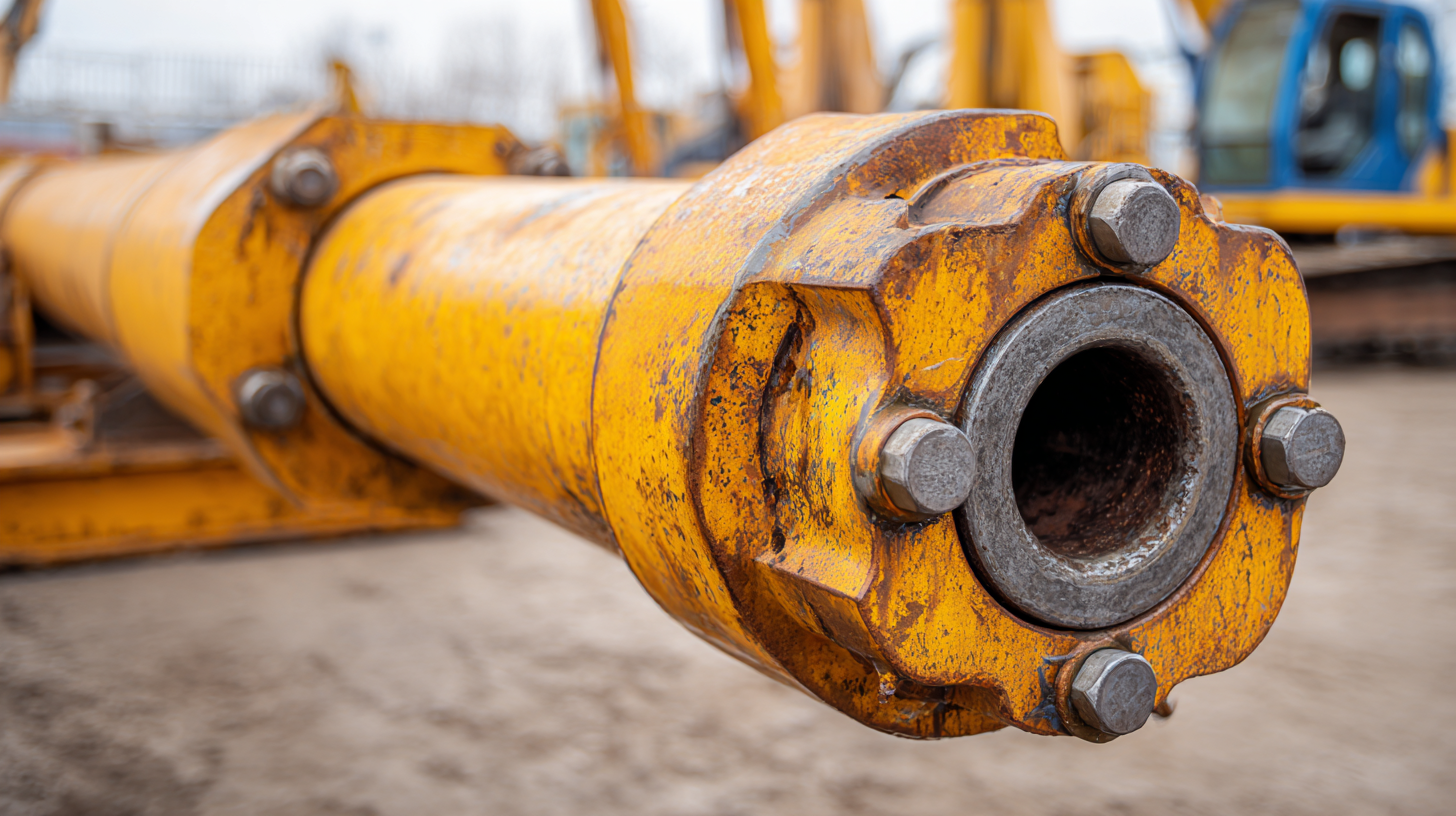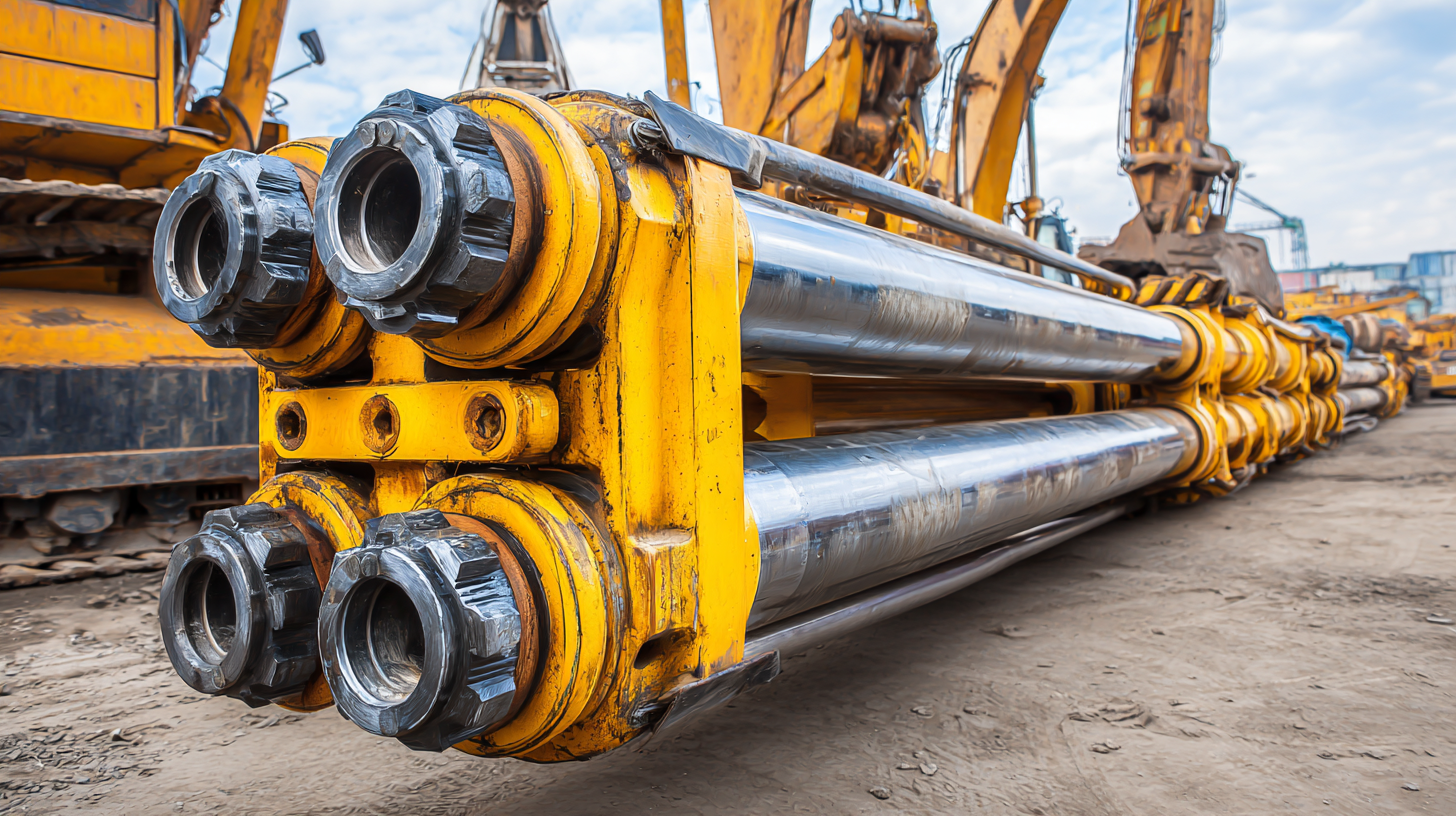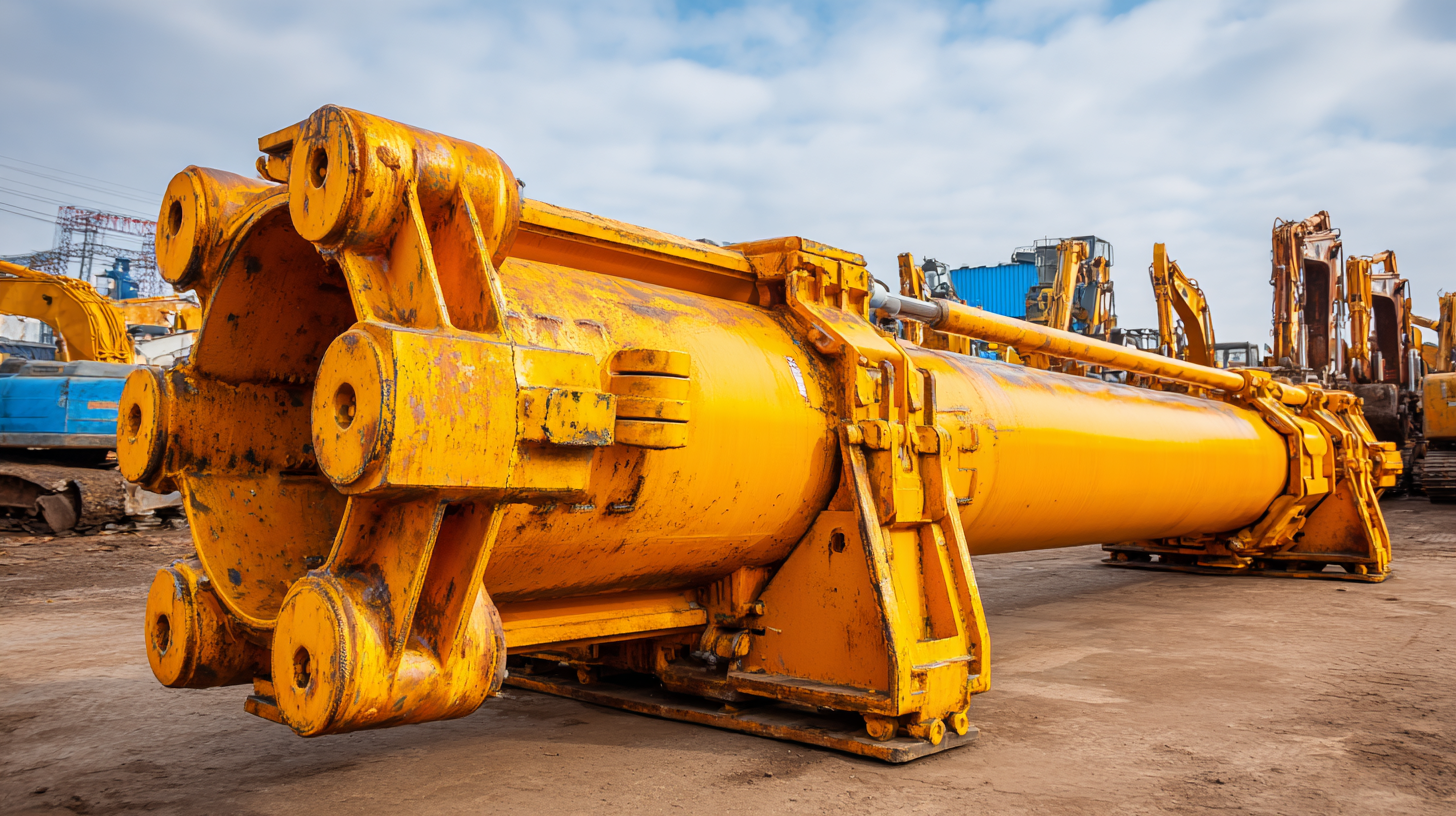
Ultimate Guide to Choosing the Right Hydraulic Cylinder for Excavators with Key Specs and Tips
In the construction and heavy machinery industry, the hydraulic cylinder for excavators plays a pivotal role in ensuring operational efficiency and performance. According to the latest market analyses, the hydraulic cylinder market is poised to grow exponentially, with a projected CAGR of over 5% through 2027. The increasing demand for construction activities worldwide, coupled with the necessity for advanced machinery capable of handling various terrains and tasks, underscores the importance of selecting the right hydraulic cylinder. However, finding a quality supplier can be a daunting task, especially with numerous options available. This guide will provide you with essential tips and specifications to help you navigate the selection process, ensuring you choose a hydraulic cylinder that meets your excavator's specific needs and enhances productivity on the job site.

Understanding the Functionality and Importance of Hydraulic Cylinders in Excavators
Hydraulic cylinders are crucial components in excavators, serving as the powerhouse that drives their operations. These cylinders convert hydraulic energy into mechanical force, enabling the precise movement of the machinery. Understanding their functionality is essential for selecting the right hydraulic cylinder, as it impacts the overall performance, efficiency, and durability of the excavator. With a projected market growth from USD 14.3 billion in 2021 to USD 18.3 billion by 2027, the importance of these systems in construction and other industries is clear.
As demands for energy efficiency rise, innovative hydraulic solutions are emerging. Displacement-controlled systems have gained traction due to their ability to optimize performance while reducing fuel consumption. Additionally, the integration of electric actuators presents an attractive alternative, significantly lowering emissions in mobile machinery. These advancements are crucial to meeting the evolving requirements of the construction industry, emphasizing the importance of selecting the right hydraulic cylinder to leverage these technological improvements effectively.
Ultimate Guide to Choosing the Right Hydraulic Cylinder for Excavators
| Specification | Details |
|---|---|
| Cylinder Type | Single-acting and double-acting |
| Bore Diameter | 2 to 12 inches |
| Stroke Length | Up to 100 inches |
| Rod Diameter | 1 to 6 inches |
| Pressure Rating | 2500 to 5000 psi |
| Mounting Style | Clevis, trunnion, and flange mount |
| Material | Steel and aluminum |
| Sealing System | Rod seals, wipers, and bumper seals |
| Maintenance Tips | Regular inspections, lubrication, and cleaning |
Key Specifications to Consider When Selecting Hydraulic Cylinders
When selecting hydraulic cylinders for excavators, key specifications play a crucial role in ensuring optimal performance and efficiency. One of the primary aspects to consider is the cylinder’s bore size, which directly influences the lifting capacity of the excavator. A larger bore can generate more force, making it suitable for heavy-duty applications.
 Additionally, the stroke length is vital, as it determines how far the cylinder can extend to perform tasks. It’s essential to match the stroke length to the operational requirements of your excavator to maximize productivity.
Additionally, the stroke length is vital, as it determines how far the cylinder can extend to perform tasks. It’s essential to match the stroke length to the operational requirements of your excavator to maximize productivity.
Another critical specification is the working pressure, which indicates the maximum pressure the cylinder can handle. Selecting a cylinder with an appropriate pressure rating is crucial to avoid potential failures during operation. Additionally, the type of hydraulic oil used can affect the cylinder’s performance and longevity, so consider compatibility when making your choice. Lastly, the material and construction of the cylinder will impact durability and resistance to wear, particularly in demanding environments. By carefully evaluating these specifications, you can make an informed decision that enhances your excavator's capabilities and ensures reliable operation.
Common Types of Hydraulic Cylinders and Their Applications in Excavators
When it comes to excavators, understanding the common types of hydraulic cylinders is crucial for optimal performance and application. The main types include double-acting cylinders, which are used for lifting and pulling operations, and single-acting cylinders, commonly employed in applications where force is only needed in one direction. Each type serves distinct roles in digging, lifting, and loading tasks, making it imperative to select the right cylinder based on specific job requirements.
When choosing a hydraulic cylinder, consider the working pressure, stroke length, and mounting style. These specifications can significantly impact the cylinder's efficiency and compatibility with your excavator. Additionally, it's essential to assess the cylinder's material and design to ensure durability under harsh working conditions.
Tips for maintaining hydraulic cylinders include regular inspections for leaks or wear, ensuring proper lubrication, and monitoring the hydraulic fluid levels. Keeping these factors in check not only extends the lifespan of the hydraulic system but also improves the overall performance of the excavator, ensuring that it operates smoothly and efficiently during demanding tasks.
Tips for Ensuring Long-Lasting Performance of Hydraulic Cylinders
When it comes to the longevity and efficiency of hydraulic cylinders in excavators, adhering to certain maintenance practices is essential. Regular inspections play a critical role in identifying potential wear and tear before they escalate into major issues. Look for signs of leaks, unusual noises, or changes in performance. Addressing minor problems promptly not only ensures optimal performance but also extends the lifespan of the hydraulic cylinder.

Additionally, using the correct hydraulic fluid is crucial for the smooth operation of these cylinders. The right fluid not only provides lubrication but also helps in temperature regulation and prevents corrosion. Be sure to follow manufacturer guidelines for fluid specifications and maintenance schedules. Implementing a routine maintenance plan that includes fluid checks, filter replacements, and system clean-ups can greatly enhance the durability of hydraulic systems in excavators. By prioritizing these aspects, operators can ensure their equipment remains reliable and efficient over time.
Factors Influencing the Cost and Quality of Hydraulic Cylinders from China
When selecting a hydraulic cylinder for excavators, understanding the factors that influence cost and quality is crucial, particularly when sourcing from China. The quality of materials used in manufacturing hydraulic cylinders plays a significant role in their durability and performance. For instance, high-grade steel and precise machining can increase costs, but they also enhance the lifespan and reliability of the cylinder.
Another vital consideration is the design complexity and manufacturing process. Innovations such as the design and optimization of hydraulic components are essential for improving efficiency. Recent advancements in forming process parameters and injection molding techniques can lead to better-performing hydraulic cylinders. Therefore, it's important to evaluate manufacturers based on their technological capabilities and how they adapt to such advancements.
Additionally, regional economic factors can significantly impact the overall pricing of hydraulic cylinders. Costs can vary between different regions in China, influenced by the local cost of living, labor, and materials. Understanding these economic dynamics will not only help in negotiating prices but also ensure that the quality received justifies the amount spent. By keeping these elements in mind, one can make an informed decision when purchasing hydraulic cylinders for excavators.
